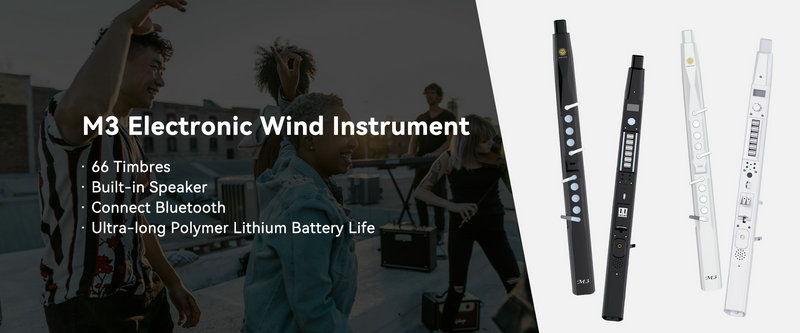Electronic wind instruments can be classified into the following categories based on different criteria:
By Sound Production Method:
Synthesizer-Based Electronic Wind Instruments: These instruments generate sounds through digital synthesis techniques. They can create a wide range of sounds by manipulating various parameters such as waveforms, filters, and envelopes. Synthesizer-based electronic wind instruments often offer a high degree of customization and the ability to create unique and unconventional sounds.
Sampler-Based Electronic Wind Instruments: Sampler-based electronic wind instruments use pre-recorded samples of real acoustic instruments as the source of their sounds. These samples can be triggered and manipulated in various ways to produce different musical effects. Sampler-based instruments typically offer a more realistic reproduction of traditional instrument sounds but may have limitations in terms of sound variation and customization compared to synthesizers.
By Instrument Type:
Electronic Saxophones: Electronic saxophones mimic the appearance and playing style of traditional saxophones but produce sounds electronically. They often have features such as multiple sound presets, built-in effects processors, and the ability to connect to external sound systems. Electronic saxophones are popular among saxophone players who want to explore new sounds and expand their musical capabilities without the limitations of acoustic instruments
Electronic Flutes: Electronic flutes are designed to resemble traditional flutes but use electronic means to generate sounds. They may offer features like touch-sensitive keys, adjustable breath sensitivity, and a variety of sound effects. Electronic flutes are suitable for flute players who desire a more versatile instrument or want to experiment with different sonic textures
Electronic Trumpets: Electronic trumpets mimic the look and playing technique of traditional trumpets while producing electronic sounds. They can provide a wide range of tonal options, including different trumpet models and sound effects. Electronic trumpets are often used by trumpet players in various musical genres, especially in situations where a traditional trumpet may not be practical or where unique sounds are desired
Other Electronic Wind Instruments: In addition to the above common types, there are also other electronic wind instruments such as electronic clarinets, electronic oboes, and electronic bagpipes. These instruments are less common but can offer unique musical possibilities for players interested in exploring specific instrument sounds or musical styles.
By Function and Application:
Performance Electronic Wind Instruments: These instruments are designed primarily for live performance. They are often lightweight, portable, and have features that facilitate easy setup and use on stage. Performance electronic wind instruments typically have a wide range of sounds and effects available, allowing musicians to create dynamic and engaging performances.
Studio Electronic Wind Instruments: Studio electronic wind instruments are mainly used in recording studios and music production environments. They may offer more advanced sound editing and processing capabilities, as well as compatibility with various music production software and equipment. These instruments are often used by composers, producers, and sound engineers to create and manipulate sounds for recordings, film scores, and other media.
Educational Electronic Wind Instruments: Educational electronic wind instruments are designed for beginners or students learning to play a wind instrument. They usually have simplified controls and user-friendly interfaces to make it easier for novice players to learn the basics of playing and music theory. Some educational electronic wind instruments also come with built-in teaching tools and tutorials to assist the learning process.
SUNRISE MELODY M3 Electronic Wind Instrument - The best-selling Electronic Wind Instrument
. 66 Timbres
. Built-in Speaker
. Connect Bluetooth
. Ultra-long Polymer Lithium Battery Life



